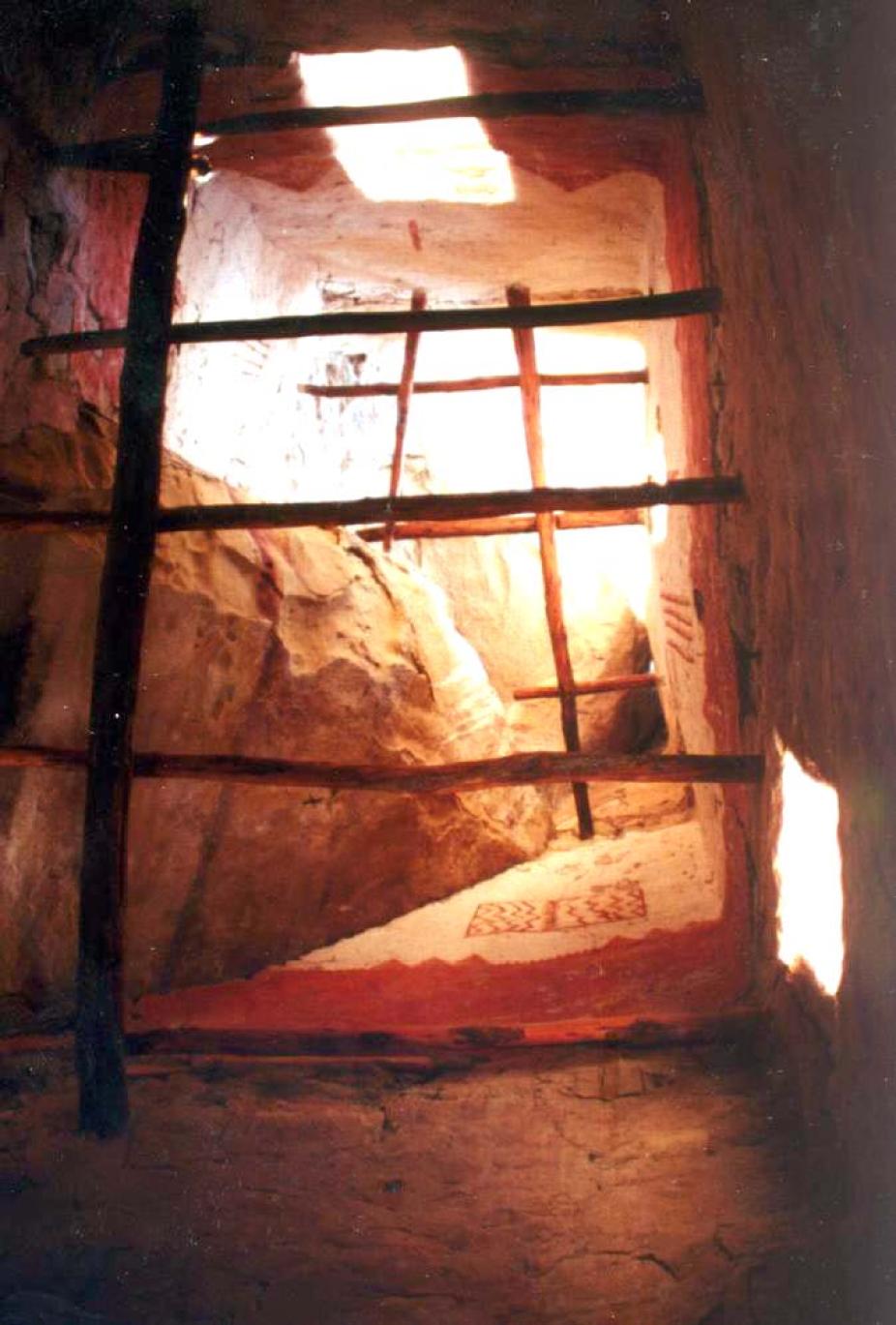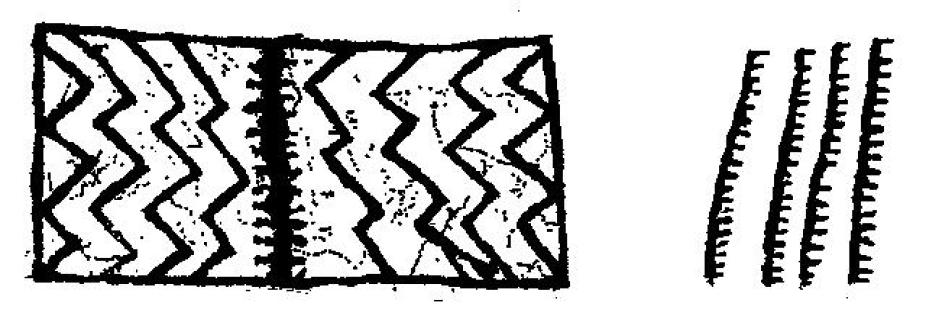Lunar Astronomy

Figure 1. Two peculiar pictographs painted in red may represent a record of lunar observations.
Figure 1 shows a view looking straight up the inside of the square tower at Cliff Palace, Mesa Verde, from ground level. Notice the two peculiar pictographs painted in red on the wall of the third story room in the tower. There is good circumstantial evidence that these two pictographs represent a record of lunar observations.
Next to the Sun, the Moon is perhaps the most conspicuous astronomical object in the sky, because of the sequence of illumination phases it undergoes every 28 days. Because the Moon's orbital axis about the Earth is nearly parallel to the Earth's orbital axis about the Sun, the Moon follows daily and seasonal paths in the sky that resemble the Sun's. However, because of the approximately 5o difference between the two orbital planes, the azimuth of moon rise (or moon set) can oscillate by up to ± 6o 40' (for an observer at 36o latitude) about the Sun's rising (or setting) azimuth in the course of a monthly lunar cycle. In addition, the Sun's gravitational pull leads to a procession of the Moon's orbital axis, with a period of 18.6 years. This means that every 18.6 years, the rising or setting Moon reaches a northern extreme in rising and setting azimuth at summer solstice, and a southern extreme at winter solstice. These are called major standstills. While such standstills can in principle be determined using horizon observations, as with the summer solstice Sun the Moon's year-to-year angular displacement along the horizon at summer solstice is very small near standstill. Unlike for the Sun, anticipatory observations must now be carried a few years ahead of the major standstill.

Figure 2. Pictographs on the third story of the square tower at Cliff Palace. The left panel, located on the inside North wall, can be interpreted as a "teaching aid" demonstrating the back-and-forth motion of the rising and setting Moon along the horizon, in the course of one year. The panel on the right is located on the west wall next to the small square third story window, and can be interpreted as a tally of years between major lunar standstills.
Redrawn from diagrams in chapter 8 of J. McKim Malville's "Prehistoric Astronomy in the Southwest"
From the square tower's small third story window noted in the preceding slide, a line pointing to the moon set azimuth of the (southern) major lunar standstill passes through the narrow gap between the two large towers of the Sun Temple. It has been suggested that this is an intentional construct aimed at marking major lunar standstills. Further support for this hypothesis comes from the two aforementioned pictographs, reproduced in figure 2. The first (on the left) can be interpreted as a space-time diagram of the moon set's daily displacement along the horizon: azimuth runs horizontally and time vertically upward, and the zigzag lines depict the back-and-forth motion of the moon along the horizon, for the rising (left half of diagram) and setting (right half) Moon. Note that there are a total of twelve zigzags depicted in each half of the diagram, which come as close to adding up to a year as it could, given that the year and lunar month are not commensurate.
Of course, different interpretations of these pictographs are possible, especially since zig-zag patterns and rows of tick marks are common in Anasazi rock art. Other possible evidence for the Anasazi's lunar interests can be found at nearby Chimney Rock, where, as seen from the mesa-top pueblo, moon rise at major standstills is neatly framed by the twin rock towers giving the site its name (see slide 1, The Ancient People). It has been also suggested that the 3-slab slit site on Fajada butte could have also served as a marker of major lunar standstills, based on the way in which the side edge of the outer slab casts a shadow across the spiral petroglyph. Once again the lunar-cycle interpretations of these sites represent only plausible conjectures. A significant counterargument comes from the lunar astronomical practices of modern Pueblo people, who show great interest in the phases of the moon for time-keeping and yearly calendrical purposes, but not in its longer orbital or calendrical cycles.